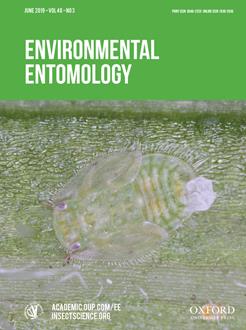Lymantria dispar L. and Lymantria monacha (L.) are Eurasian pests that have the potential for accidental introduction via trade into other world areas. Establishment of first instars of Lymantria depends on larvae surviving long enough to disperse and finding suitable hosts. The survival and development of newly hatched Lymantria larvae from nine geographic populations at seven temperatures (1–30°C) held without food, with summer foliage of a preferred or conifer host was determined. There was considerable variation both within and among the Lymantria populations in the survival of larvae at different temperatures when held with and without food. Without food survival declined from about a month at 5°C to a few days at 30°C, following a typical enzymatic kinetic rate function. At 1°C larval survival was less than at 5°C likely because the larvae were susceptible to freezing. Larvae from the one L. monacha population fed and gained weight on the summer foliage, particularly on the conifer, at 10–15°C but < 20% survived for 14 d at 20–30°C. The newly hatched L. dispar larvae from all eight populations fed (at 10–30°C) and developed (at 15–30°C) on the summer foliage of one or both of the hosts. This suggests that they may be able to find adequate food for establishment even if hatch is not synchronous with bud break in the invaded habitat. Survival on the conifer was highest for one Chinese and two European populations of L. dispar, suggesting the ability to utilize conifers is population and not subspecies specific.
How to translate text using browser tools
6 April 2019
Effects of Temperature on First Instar Lymantria (Lepidoptera: Erebidae) Survival and Development with and Without Food
Melody A. Keena,
Juan Shi
ACCESS THE FULL ARTICLE
It is not available for individual sale.
This article is only available to subscribers.
It is not available for individual sale.
It is not available for individual sale.

Environmental Entomology
Vol. 48 • No. 3
June 2019
Vol. 48 • No. 3
June 2019
Establishment
gypsy moth
Lymantria dispar
Lymantria monacha
nun moth





